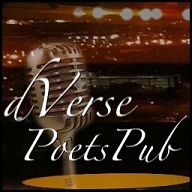Archive
Hats – Terza Rima


California Ink In Motion by TheMsLvh is licensed under a Creative Commons Attribution-NonCommercial-NoDerivs 3.0 Unported License
Form
Terza rima is a three-line stanza using chain rhyme in the pattern A-B-A, B-C-B, C-D-C, D-E-D. There is no limit to the number of lines, but poems or sections of poems written in terza rima end with either a single line or couplet repeating the rhyme of the middle line of the final tercet. The two possible endings for the example above are d-e-d, e or d-e-d, e-e. There is no set rhythm for terza rima, but in English, iambic pentameter is generally preferred.
History
The first known use of terza rima is in Dante’s Divina Commedia. In creating the form, Dante may have been influenced by the lyric form used by the Provençal troubadours. The three-line pattern may have been intended to suggest the Holy Trinity. Inspired by Dante, other Italian poets, including Petrarch and Boccaccio, began using the form.
The first English poet to write in terza rima was Geoffrey Chaucer, who used it for his Complaint to His Lady. Although a difficult form to use in English because of the relative paucity of rhyme words available in a language which has, in comparison with Italian, a more complex phonology, terza rima has been used by Milton, Byron (in his Prophecy of Dante) and Shelley (in his Ode to the West Wind and The Triumph of Life). Thomas Hardy also used the form of meter in ‘Friends Beyond’ to interlink the characters and continue the flow of the poem. A number of 20th-century poets also employed the form. These include Archibald MacLeish, W. H. Auden, Andrew Cannon, William Carlos Williams, T. S. Eliot, Derek Walcott, Clark Ashton Smith, James Merrill, Robert Frost and Richard Wilbur. [Information source :Wikipedia]



